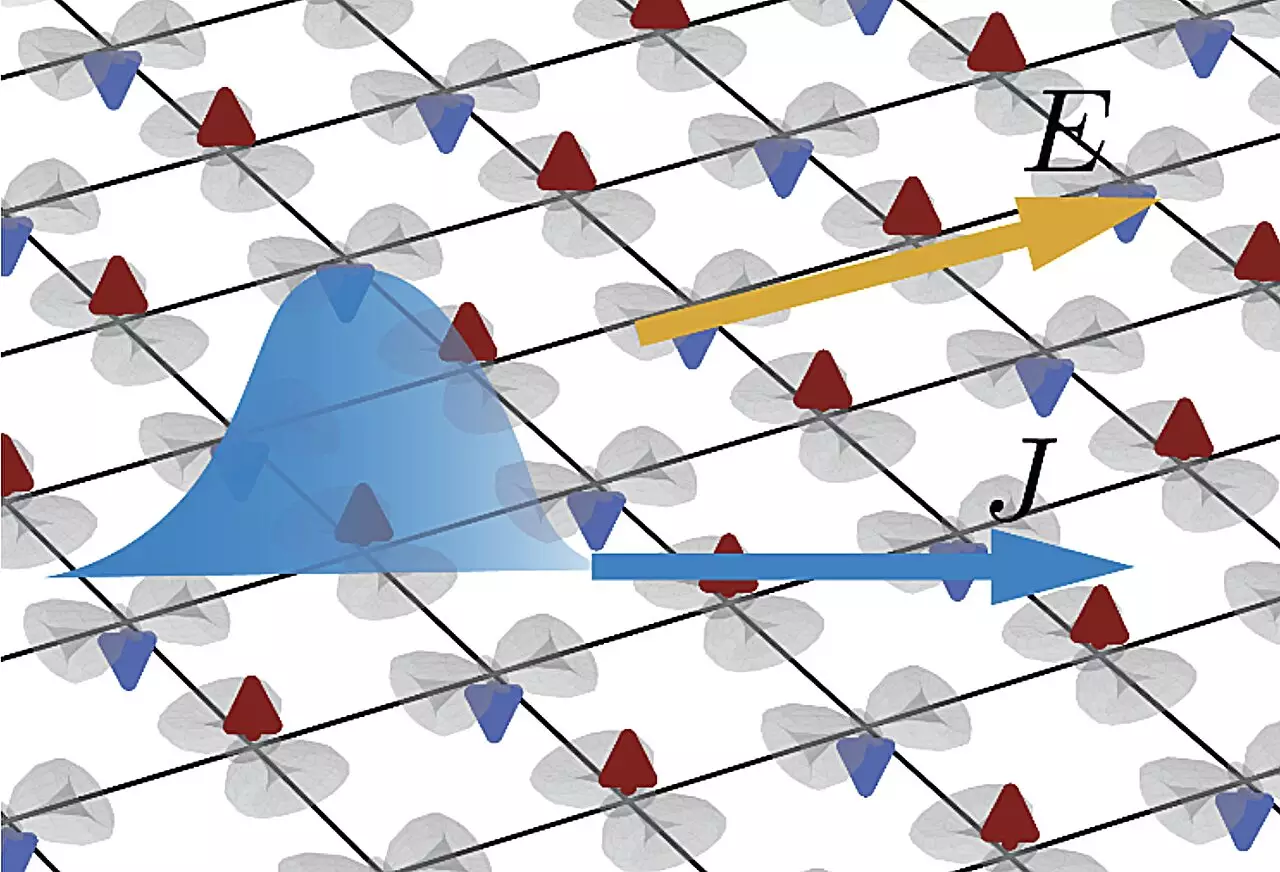In recent years, the scientific community has witnessed an exciting paradigm shift with the emergence of altermagnets. These materials represent a new frontier in the study of magnetism, diverging from well-established concepts such as ferromagnetism and antiferromagnetism. Altermagnets exhibit a distinctive relationship between the spin of electrons and their momentum, a phenomenon that can be attributed to their unique structural and electronic properties. This innovative class of materials is not just an academic curiosity; it holds immense potential for the development of cutting-edge spintronic and electronic devices, positioning itself as a potential game changer in technology.
A recent study conducted by physicists at Stony Brook University delves into the nonlinear response behaviors of planar altermagnets. The findings, detailed in their publication in *Physical Review Letters*, reveal an unprecedented connection between quantum geometry and material response. Sayed Ali Akbar Ghorashi, a lead author in the study, emphasized the unique nature of these materials and their lack of traditional parity (P) and time-reversal (T) symmetry, which is present in other magnetic materials. This absence results in the quantum geometry having previously unexplored effects on their nonlinear magnetic responses.
Ghorashi’s remarks highlight a crucial feature: while the Berry curvature—a critical aspect in many magnetic systems—vanishes in altermagnets, the quantum metric becomes a pivotal element governing their behavior. This distinction is not merely academic; it lays the groundwork for developing novel devices that leverage these unique properties.
To unravel the complexities surrounding the nonlinear responses of altermagnets, Ghorashi and his team utilized semiclassical Boltzmann theory, meticulously computing contributions up to the third order of electric field. This approach allowed them to dissect multiple factors influencing the observed nonlinear behavior, providing clarity in a domain that has long been ambiguous. It is noteworthy that their research uncovered the quantum geometrical underpinnings of each response term systematically, showcasing an innovative methodology that could set a precedent for future studies.
Each class of planar altermagnets displayed distinctive characteristics in terms of their third-order conductivity, which emerged as a significant finding in the understanding of nonlinear magnetism. Their research underscores that unlike previous varieties of magnetic materials that typically exhibit second-order responses, altermagnets distinctly exhibit dominant third-order responses due to their unique inversion symmetry. This has far-reaching implications for both theoretical explorations and practical applications.
The implications of these findings extend far beyond theoretical realms. The identification of significant nonlinear responses induced by quantum geometry positions altermagnets as critical players in future research on electronic and spintronic devices. Ghorashi notes that the large spin-splitting observed in these materials contributes to their profound linear anomalous Hall conductivity, which enables novel transport characteristics that had not been associated with altermagnets previously.
Furthermore, the weak spin-orbit coupling relative to magnetic exchange interactions suggests that altermagnets will continue to reveal unique physics yet to be explored. This opens avenues for new experimentation and device development, posing exciting prospects for those in industries ranging from quantum computing to advanced material science.
As the team looks to the future, they aim to refine their understanding of the nonlinear responses further by moving beyond the relaxation time approximation, a traditional limit in studies of electronic materials. Exploring the effects of disorder promises to enrich the dynamics of altermagnet phenomena, possibly mirroring insights gained from PT-symmetric antiferromagnets. This commitment to expanding the knowledge base will not only deepen the understanding of altermagnets but could lead to breakthroughs in the manipulation and application of quantum materials.
The expanding universe of altermagnets is ripe for exploration. With each research endeavor, physicists and materials scientists are unveiling mysteries that may change the foundation of how we understand magnetic materials and their applications. As we stand at the threshold of this new era, it is apparent that altermagnets are not just next-gen materials; they are pivotal to the evolution of technology as we know it.


Leave a Reply